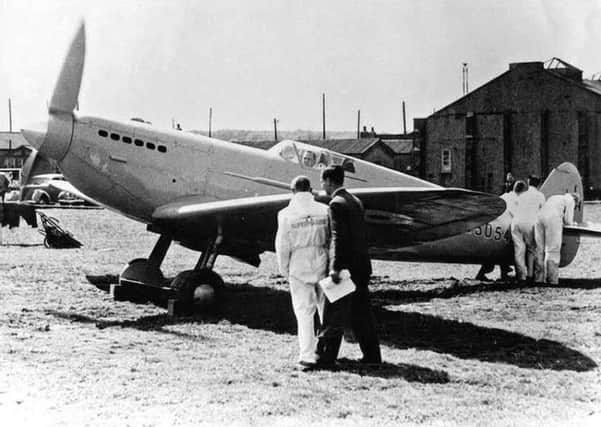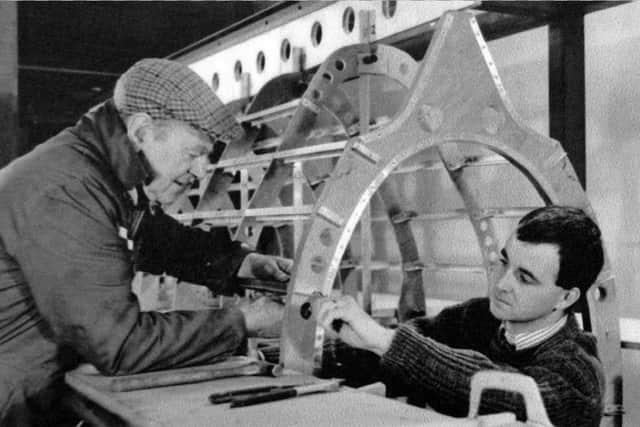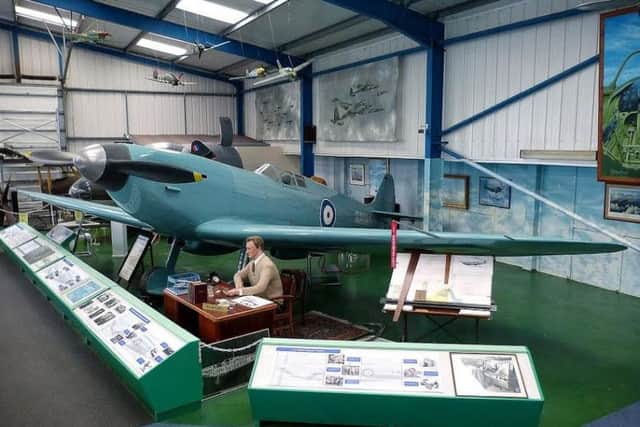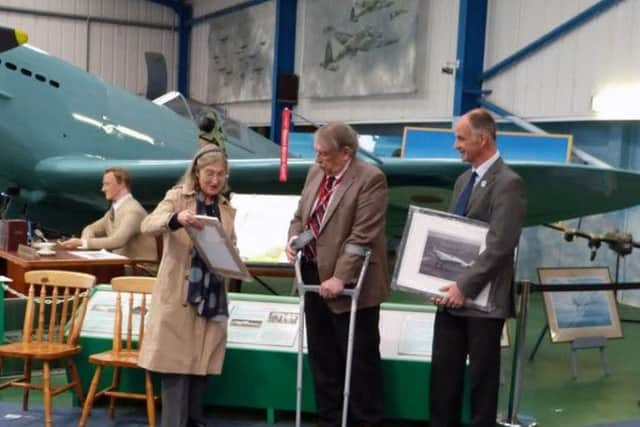Launch of historic aircraft with a '˜bloody silly name'
This article contains affiliate links. We may earn a small commission on items purchased through this article, but that does not affect our editorial judgement.


The pilot was Vickers’ chief test pilot Joseph ‘Mutt’ Summers and the first flight lasted just eight minutes.
Summers landed and taxied towards the knot of people waiting to receive him. Jeffrey Quill, who was present, reported that Summers, when still in the cockpit, said: “I don’t want anything touched”, meaning he had found no major snag and he did not want the controls or anything else altered before the next flight.
Advertisement
Hide AdAdvertisement
Hide AdThe next day, Summers carried out a 20-minute flight to check the aircraft’s handling.


After the undercarriage retraction system was brought into operation, Summers flew K5054 for 30 minutes on March 10.
He again flew the aircraft two weeks later and then handed it over to test pilots Jeffrey Quill and George Pickering to take over the test programme.
The initial trials to calibrate airspeed indicator errors revealed that the aircraft’s maximum speed was only 330mph.
Advertisement
Hide AdAdvertisement
Hide AdAt about this time, Vickers suggested to the Air Ministry the name ‘Spitfire’ for the new fighter.


Quill heard the aircraft’s designer RJ Mitchell comment: “It’s the sort of bloody silly name they would give it!”
K5054 was also painted in a light blue/grey gloss finish.
In May, Quill undertook high speed dives but even with the new finish and a lowered carburettor air intake, the best speed from the Spitfire was 335mph.
However, the new aircraft’s speed improved with the fitting of a redesigned propeller which gave an acceptable maximum speed of 348mph.
Advertisement
Hide AdAdvertisement
Hide Ad

On May 26 1936, Summers delivered K5054 to Martlesham Heath for RAF evaluation testing. In his first flight,
Flight Lieutenant Edwardes-Jones found that the Spitfire handled well but almost had an accident when he forgot to lower the undercarriage until just before touching down.
On the basis of Edwardes-Jones’ report to the Air Ministry a contract was signed on June 3 for the first 310 Spitfires.
In August, K5054 returned to Eastleigh for the installation of the eight 0.303 inch calibre Browning guns.
Advertisement
Hide AdAdvertisement
Hide Ad

Further testing was delayed until December to enable the fitting of the new more powerful version of the Rolls-Royce engine.
After testing resumed on December 6 1936, Quill, short of fuel, diverted to RAF Tangmere and stayed overnight.
This was the first occasion a Spitfire had landed on an RAF airfield.
During February 1937, a problem was found when firing the aircraft’s guns at high level. This problem was not to be resolved for another 18 months.
Advertisement
Hide AdAdvertisement
Hide AdK5054’s career came to an end on September 4 1939, the day after war was declared.
Flight Lieutenant ‘Spinner’ White misjudged his approach when landing at Farnborough.


The aircraft bounced heavily twice before nosing over on its back.
White died in hospital four days later. The aircraft was not repaired and was scrapped.
Advertisement
Hide AdAdvertisement
Hide AdAfter the war, Jeffrey Quill believed that RJ Mitchell’s contribution to aviation history had not been fully recognised and proposed the construction of a full size facsimile of the Spitfire prototype to complete the Spitfire story.
The Spitfire Society agreed to the building of a facsimile to depict the prototype as it appeared at the time of its high speed trials in May 1936.
Work on the construction was completed in 1992, just 10 years after Jeffrey Quill’s first proposal.
It was taken to the RAF Museum, Hendon where it was unveiled for public display on April 24 1993.
Advertisement
Hide AdAdvertisement
Hide AdWhen it went on show at Hendon, Jeffrey Quill said that the replica was 99 per cent accurate when compared with the original prototype.
The K5054 facsimile is now located permanently at the Tangmere Military Aviation Museum following its donation to the Trust on April 27 2013, at a ceremony when Sarah Quill, Jeffrey Quill’s daughter, handed over the facsimile on behalf of the Spitfire Society.
Text: David Coxon, Curator, Tangmere Military Aviation Museum
Photos: Pete Pitman, Tangmere Military Aviation Museum
Don’t miss out on all the latest breaking news where you live.
Advertisement
Hide AdAdvertisement
Hide AdHere are four ways you can be sure you’ll be amongst the first to know what’s going on.
1) Make our website your homepage at www.chichester.co.uk/
2) Like our Facebook page at www.facebook.com/ChichesterObserver
3) Follow us on Twitter @Chiobserver
4) Register with us by clicking on ‘sign in’ (top right corner). You can then receive our daily newsletter AND add your point of view to stories that you read here.
And do share with your family and friends - so they don’t miss out!
The Chichester Observer - always the first with your local news.
Be part of it.